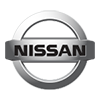Transformation Services
Not Sure Where to Start?
Transformation Services
Not Sure Where to Start?
Transformation Services
Not Sure Where to Start?

WebMAP for Angular is the leading solution to move legacy applications to modern web native languages and platforms. Got critical desktop apps written in VB6, PowerBuilder, Windows Forms, Microsoft Access or Blazor? How about Silverlight or ASP.NET Web Forms? Any of those can now be a performant, multi-user/multi-session native web application running ASP.NET Core with Angular and HTML5 on the client.
What is WebMAP for Angular? A set of automated tools that analyze source code and convert it to modern languages like C# and JavaScript. Back-end business logic and rules are preserved and moved to ASP.NET Core as server- side executables. The result is a clean, low-risk modernization process that slashes time to market compared to rewriting from scratch.
Watch WebMAP migrate VB6 code to HTML with Angular and ASP.NET Core.
Here's what to expect in the migration process:
This structured approach delivers a seamless migration with minimal disruption, unlocking the power of Angular for your business.
Angular Migration Resources
No. WebMAP builds a rich architecture for your application using modern patterns and technologies like ASP.NET Core on the server side, Angular with Progress Kendo for Angular on the client side, with JSON, CSS, AJAX, and more. Some desktop operating system capabilities may not be supportable on a web application (printing, local storage, hardware access, etc). Some manual changes are inevitable when moving from desktop to web; our engineering team will be happy to consult with you on the extent of your needed changes and how to best effect them.
The architecture of the resulting app uses ASP.NET Core or Apache Tomcat as a server, with an Angular front end (HTML plus CSS). We currently use Progress Kendo for Angular for client UI controls. Communication between client and server is JSON and WebAPI.
Yes, currently WebMAP uses Angular with Progress Kendo for Angular; note this is a licensed product and if you use it beyond the trial or evaluation stage you will need to purchase a license.
When you start a migration you have to choose which framework you would like to target.
Most Microsoft and some third party controls are supported. When you run our assessment tool, we can tell you what can and cannot be mapped. Customizations are available to map patterns and controls that are unique to your code.
Our WebMAP automation does not create a responsive app with the resulting migration code. However, since the client is pure Angular with HTML and CSS, it's possible to build responsiveness into the client code post code migration.
Transform your VB6 applications into modern Angular web apps
Learn More →
Automate your VB.NET code migration to Angular
Learn More →
Transformative PowerBuilder to Java & C# web migration
Learn More →
Automate your C#/WinForms code migration to Angular
Learn More →
Go cloud native with your web migration
Learn More →
View all products and migration tool offerings
Learn More →

Mobilize.Net offers valuable technology and services that help customers easily modernize their legacy applications for use on today’s modern platforms and devices program at Microsoft.
- Shawn Nandi, Sr Director, Cloud App Development, Data & AI Marketing
We were able to migrate our VB6 code to .NET using the VBUC license we acquired through MSDN. After the migration only a few things needed manual modification. So your software did a great job and saved us a lot of time
- JMarco Botermans, Owner - Fluke
“Mobilize.Net has a strong track record of building products that successfully automate challenging source code migrations, and this [product] will empower our customers to get up and running on Snowflake sooner.”
- Chris Degnan, CRO at Snowflake
Mobilize.Net seemed the only one that sorted out the details, not only the basic issues of a migration engagement. Its product, the Visual Basic Upgrade Companion, included unique, powerful features, many of which turned out to be very valuable for this specific project, like ADO to ADO.NET conversion and error handling transformation
- Rod Coles – President, Bold Technologies, Ltd
We ran a proof of concept comparing the Visual Basic Upgrade Companion (VBUC) with other VB6 migration tools and we definitely preferred the way VBUC handled the conversion.
- James Lewis Stevenson II – Software Design Engineer, GT Software





8834 N Capital of Texas Hwy, Ste 302
Austin, TX 78759
Call us: +1.512.243.5754
info@wearegap.com